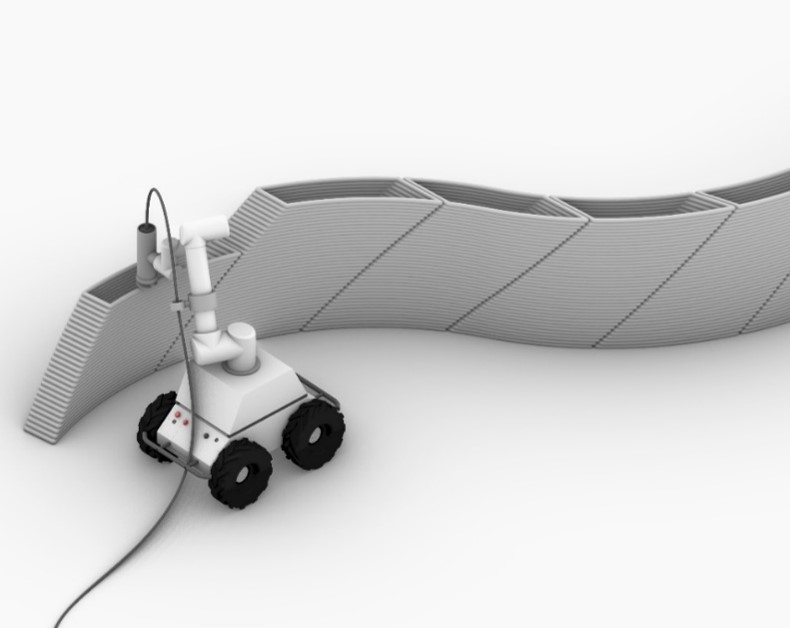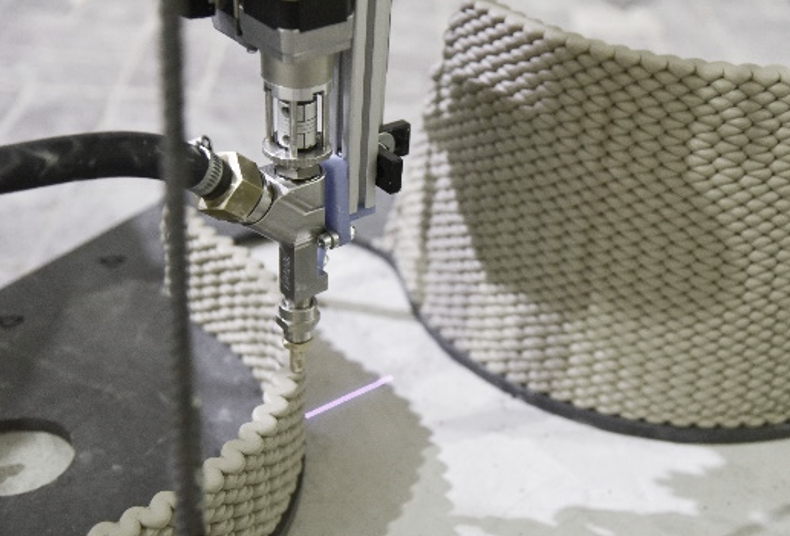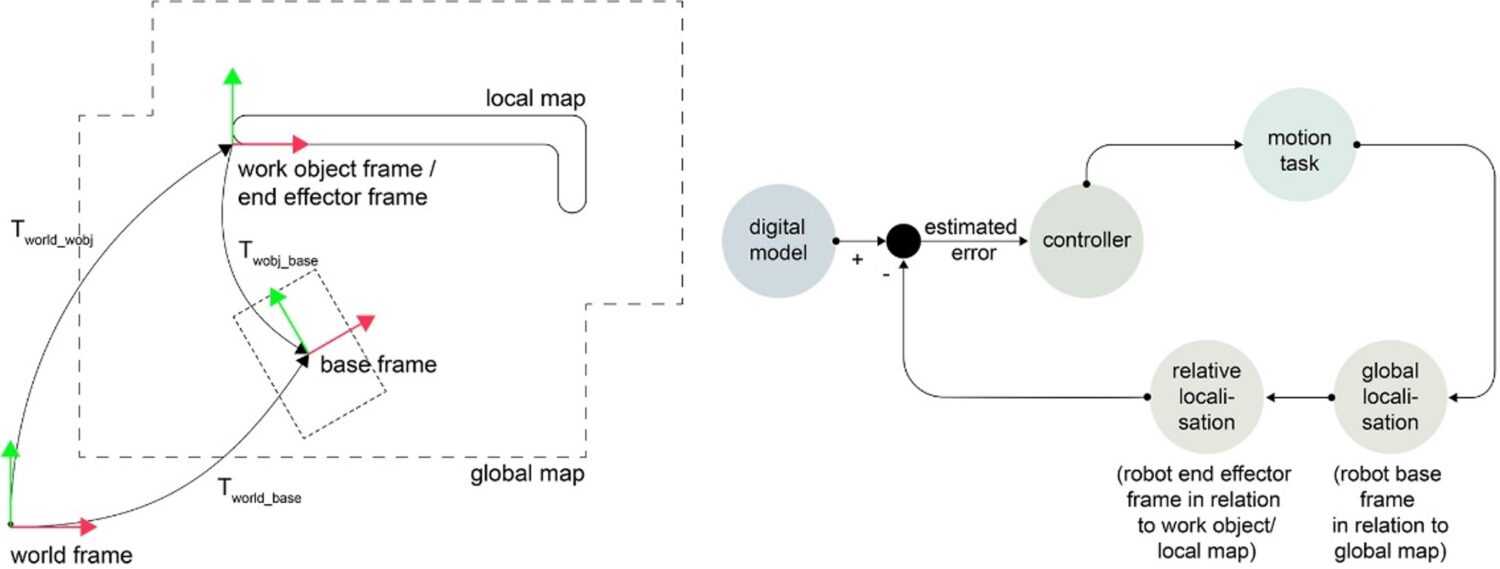Project B 05

Networking with other projects
Poster
TRR277_B05_Poster_1-DFG-Begutachtung
TRR277_B05_Poster_2-DFG-Begutachtung
Principles of Mobile Robotics for Additive Manufacturing in Construction
This research examines the architectural implications of mobile robotics for AM in construction and develops methods for their implementation. The material deposition method of clay and concrete extrusion is used to investigate AM strategies for mobile robots. By implementing advanced sensor and control solutions, autonomous localization and precise manipulation techniques for mobile AM are explored with the aim of manufacturing large building components whose size exceeds the robot’s static workspace. Additionally, this research aims to provide scalability to AM processes by examining the use of multiple robots to cooperate on individual manufacturing jobs.
Objective
The main objective of this research is the conception and development of building-scale AM technology using mobile robots to study various architectural application scenarios. While current systems for in situ AM are often single stationary large-scale facilities, AM using mobile robots could offer a less constrained workspace and thus new architectural possibilities. They could offer scalability through collaboration and parallelization of both mobile multi-robot systems and human-robot teams. Finally, their flexibility in deployment could extend the scope of in situ AM from new construction to constructions within existing contexts.
Approach
To carry out this research, two mobile platforms are designed and set up to be capable of omni-directional ground-based movements with four steerable wheels and material extrusion heights of 2.5 m with a 6DOF robotic manipulator on a vertical linear axis. The mobile systems can further be equipped with either an onboard clay or tethered concrete extrusion 3D printing system, enabling the testing and validation of the proposed principles and methods in a laboratory environment. With the two identical systems, planned is to perform experiments with both a stepwise print-drive-print (phase 1) and a continuous print-while-drive (phase 2) approach, with the aim of creating building-scale components using coordination of tasks and cooperative behaviour with cooperating machines and humans. In this scope, a two-step on-board localization and end-effector positioning method is proposed, where firstly the mobile platform is globally located in a world map and secondly the global localization is refined by referencing the robot locally, i.e., relative to the workpiece.
Networking with other projects
This research project is strongly linked to other research areas within the TRR 277: Firstly, to the concrete extrusion AM technology developed within the research project A03; secondly, to the integration of streamlined design-to-fabrication workflows developed in C04; thirdly, to the process control and online feedback mechanisms during fabrication for robots with extended degrees of freedom developed in B04, including methods for the robot’s localization on-site; and finally to the integration of AM in the construction process using mobile robots directly on building sites, which is investigated in the research project C06.















